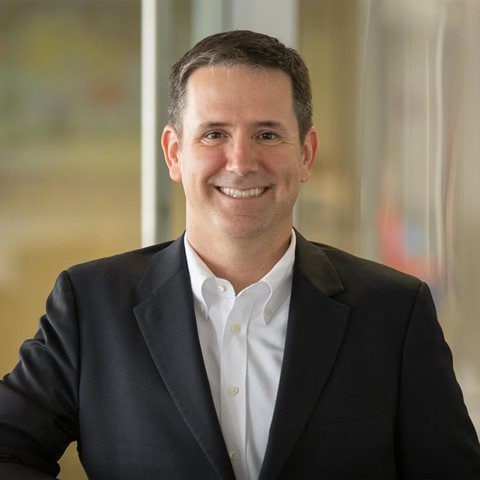Welcome to McKinsey Talks Talent, a podcast featuring McKinsey leaders and talent experts Bryan Hancock and Bill Schaninger.
Worldwide, 2020 has unspooled like no other year in recent memory. The COVID-19 outbreak and ensuing global pandemic are testing all of us. And if you’re a people leader in your organization, you’re in the thick of an unprecedented challenge. Leaders have had to remain focused on moving forward amid protracted and destabilizing uncertainty. That means helping their employees navigate complex emotions—grief, stress, loneliness—that most of us simply are not accustomed to in the workplace, at least at the scale we’re seeing now.
In this episode, Bryan and Bill speak with McKinsey Publishing’s Lucia Rahilly about mapping this new emotional geography: what’s different, what they’re hearing from leaders across the globe, and how best to respond. An edited transcript of their conversation follows.
For more from Bryan and Bill in the future, subscribe to McKinsey Talks Talent on Apple Podcasts, Google Podcasts, or the audio player of your choice.
Face it—we’re emotional
Lucia Rahilly: Bill, Bryan, welcome back. It’s been a long time. I wish we could be together in New York recording, as is our wont. How are you? What’s your COVID-19 state of mind?
Bill Schaninger: The client work has been really interesting. It’s pressing stuff: what’s happening to our work, how to think differently about the workforce, even whether we permanently change the workplace. That’s been awesome, and I’ve been blown away by how much we’ve been able to do in a completely remote environment.
But this has also made clear how much we like seeing clients. I’m like a caged animal, honestly. I’ve been in my office for six months. I don’t get on airplanes anymore. The old complaint used to be, “Oh, I’ve got to get on a plane.” Well, see how you feel about that when you can’t get on a plane for six months. The direct connection is important.
Bryan Hancock: I’ve found we’re able to connect well with clients, but connecting with our teams is challenging. Recently, I worked with a partner colleague for the first time, and it took six weeks to have the conversation you’d normally have the first night: “Hey, tell me more about your background. Oh, you like hosting brunch in New York? That sounds like fun. Where’s my invite?”
Getting to know team members on a more personal level is something I miss. At least for me, the people part of what we do—in addition to the client part—is important. And it’s not quite the same.
Lucia Rahilly: And this pandemic can feel grueling. It’s dragging on and on.
Bill Schaninger: In the early days, we treated this almost like a natural disaster: everyone was activated and running on adrenaline. But at some point, it started becoming clear that this could last a while. And then you feel it. You start grieving for the old ways and considering the possibility that this might be how things are for a long while.
Lucia Rahilly: Do we have any data on the emotional landscape in the workplace?
Bryan Hancock: I recently saw an interesting study where more than 40 percent of folks surveyed described a decline in mental health during the COVID-19 crisis. Even more shocking, nearly 40 percent of respondents said no one had called to ask, “How are you doing?” No supervisor. No one. And the folks who hadn’t been checked on had a 38 percent higher likelihood of reporting that they weren’t doing well. Checking in on people is so important. It’s amazing, the extent to which it makes a difference—and also the extent to which it’s not being done.
But should we talk about it?
Lucia Rahilly: That said, we don’t normally talk about topics like grief in the workplace—and often, we don’t even know if we should, given people’s differing comfort levels. Do you see leaders now starting to open up about issues like grief, anxiety, and depression?
Bill Schaninger: If you think of the past 25 years, there’s been a shift toward interactions becoming more antiseptic, more sanitized. “How are you doing?” isn’t asking for an honest response. It’s a genericized greeting. Now, we actually want to know how you’re doing. But for many leaders, that starting point is missing. They weren’t talking about it beforehand, which can make it harder now.
Lucia Rahilly: Leaders are also often asking more of teams now. And employees are under additional burdens and pressures at home—which means they may not know how to answer that question when asked.
Bill Schaninger: If it’s even OK to answer honestly. How do they code-switch? If you have actual intimacy with your team members, when you ask how they’re doing, you might hear, “Actually, I’m going nuts. Try working with two kids in the house.” But without that, do you know them well enough to reasonably understand what you’re asking them?
To your point, I don’t know if we’re asking people to do more or less. But I do know for a lot of people, it’s harder to get things done—maybe you’re in a flat in New York and you’re thinking about adopting a pet, and you have a spouse who works, and you have kids doing virtual school.
Lucia Rahilly: (Laughs) I don’t know anyone like that. Who is that person? I don’t know that person.
Bryan Hancock: Another example: We worked with a client who tackled organizational health during the pandemic. We took our typical approach, but remotely.
When we got back the scores and were discussing improvements, the leader decided to tell a very personal change story. She talked openly to the entire staff about what really mattered to her. Afterward employees gathered in virtual breakout rooms, and I had the privilege of sitting in. The quality of the conversation was great. My favorite comment was when one employee said to another, “What you said was amazing. But I didn’t hear the personal part of it, and we all need to hear that. I’m going to wait until you make it personal.”
The feedback was that having these open personal conversations and linking them to work and to organizational health and performance matters. It mattered before the pandemic, but it matters more than ever now.
… having these open personal conversations and linking them to work and to organizational health and performance matters. It mattered before the pandemic, but it matters more than ever now.
Lucia Rahilly: So much has been written about leaders’ emotional affect being contagious. You two were very forthcoming about the way you’re feeling. What’s the best way for leaders to open up about their own sense of loss?
Bill Schaninger: Authenticity and having the humility to acknowledge where you are. Many leaders think they need to be cheerleaders: “Awesome! So glad to be here.” Meanwhile, everything’s on fire in the background. That becomes inauthentic and also not helpful. But you also don’t want to be an amplifier—that’s a complete downer.
There’s a sweet spot: people who are comfortable with their own discomfort and with the discomfort of others, saying, “OK, we acknowledge where our starting point is. Now what can we actually do about it?” If leaders aren’t naturally comfortable with that, they may find it harder than they expect.
Lucia Rahilly: This also isn’t a normal managerial issue that can be easily resolved. Does that complicate the response?
Bryan Hancock: It does. It also means we need to take time to have empathy and just listen. As leaders, we first need to take time for ourselves, to ensure we actually catch hints that things aren’t going well. And then we need the space to engage—not for five-minute follow-ups but for longer conversations.
Maybe, as leaders, we need to look at our calendars differently, so that we’re not scheduled back-to-back. Suddenly, we’re not on planes and can be scheduled from 6:00 a.m. to 10:00 p.m. We don’t have space for ourselves or to lead effectively. That’s a challenge. I’m inspired by the folks who say, “Hey, stop. I’m creating space.” We all need to do that.

McKinsey Talks Talent Podcast
Bryan Hancock, Bill Schaninger, and other talent experts help you navigate a fast-changing landscape and prepare for the future of work by making talent a competitive advantage.
Personal life matters
Lucia Rahilly: You alluded to cues that leaders could follow up on. Could you give an example of what leaders should listen for, given that this is a potentially uncomfortable space?
Bill Schaninger: Very few employees will say anything directly. If they’re not able to surface the conflict, they’ll give you a hint. But leaders can also address some issues preemptively.
For me, the pandemic has meant that as a divorced parent, I have my daughter 50 percent of the time for real for the first time. And so I said to my teams, “Listen, my assistant will book me without asking from 7:00 a.m. to 6:00 p.m. After that, there’s dinnertime, homework time. I’ll manually put meetings in, but I’m unwilling to do much more outside those hours.”
The minute I said that, it made it dramatically easier for people to say, “Hey, I’ve got to take care of this thing with my son.” Perfectly fine. No one is saying the work’s not going to get done. It’s about making it OK to say, “I’ve got more claims on my time now than I traditionally have had.” And the mere fact of openly acknowledging it—that helps.
Lucia Rahilly: This pandemic is also a shared experience, and many of us see a lot more of each other’s personal lives. For example, right now I’m recording this podcast from my bedroom, which would ordinarily have seemed ridiculous to me. Does that sense of reciprocal understanding make things easier?
Bryan Hancock: It does, but it takes the leader to acknowledge it’s OK. As soon as I hosted a videoconference while cooking dinner, we suddenly had a lot more people cooking dinner during calls, which was great. Until then, I don’t know if the team and their families went hungry while we were talking or what. But once it was OK, people leapt to the space. So showing that we’re all going through this helps create permission for others.
Lucia Rahilly: I don’t know what that says about the stereotype about men and multitasking, but I’m impressed that you cook dinner and videoconference at the same time.
Bill Schaninger: I prep all the time without putting calls on mute because I want people to hear me chopping. Inevitably I’ll say, “Here’s what’s for dinner,” and turn the camera—again, just acknowledging we all have claims on our time.
Here’s another example: We’re a project-based firm, and Fridays were often a home day. That meant associates accumulated things that needed to happen on Friday, which made it difficult for them to get into the office. I’m curious, after this, whether we’ll give more flex during the week and return to prioritizing Fridays as a day where we can actually reinvest in us—in the tie that binds.
Many companies will need to be more purposeful about when the workplace as a convening point returns to the fore. We’re on borrowed time. We have a credit of goodwill built up, knowing people over time, but we’re drawing down on that account right now. At some point, we need to reinvest. That’s a purposeful activity, not a happenstance activity: getting clear on when and how to reinvest safely.
Lucia Rahilly: Before we leave this still-perplexing notion of Bryan cooking dinner while leading a videoconference, quick question. I recently read an article about the backlash among childless employees who feel they’ve been shouldering a disproportionate burden at work. What does this signaling about family commitments mean for folks who don’t have those same claims on their time?
Bill Schaninger: Everyone should make these claims. There tends to be a mindset, often among younger employees, that if you don’t have a kid or a partner, you should shoulder more. We need to help everyone claim, “My own sanity matters. My own physical health matters.” This is one of the things I’m hopeful will be an annuity in future. We’ll be better off for it. And resentment among employees is really problematic if it’s not identified and resolved.
There tends to be a mindset, often among younger employees, that if you don’t have a kid or a partner, you should shoulder more. We need to help everyone claim, ‘My own sanity matters. My own physical health matters.’
Bryan Hancock: There’s another level, too. For me, being home, being with my kids—who are now 16 and 14—is a huge silver lining. I’ve got a social safety net right here in my house. If I haven’t had a good day, I can grab the guitar with my older son, and we can play for half an hour; it’s great.
Unless you’re living with friends or family, you don’t have those outlets. You need to go for your run and do the things Bill is talking about. I don’t think there has been enough conversation about that loss for folks who used to go out together after work or whose office community is their family. We need to pay just as much attention to them, too, especially since they don’t have the same natural points of connectivity that some of us do.
Loss looks different—and is difficult to predict
Lucia Rahilly: Let’s talk a bit about what grief or loneliness might look like in the workforce. We understand the immensity of the pain of losing a friend or a loved one, which many people have unfortunately undergone in this crisis. But there are subtler kinds of grieving as well. What do we mean when we talk about grief in this context? What kinds of loss?
Bill Schaninger: “Loss” is the right word. And yes, obvious and transparent loss involves the death of a loved one. But this crisis has been such a major disruption to our sources of identity and, in many cases, our interactions. For people who spend a lot of time at work, there’s a big gaping hole: what will they do outside it?
Subscribe to the McKinsey Talks Talent podcast
And for many, loneliness is real, full stop. Previous behaviors—for instance, going to the gym, going to a bar, or going to hang out at a friend’s house—are often no longer possible. That means the loss of previous sorts of connections, and loss of agency, our own sense of “This is what I do.” Lots of people long for how their lives were and aren’t sure what to do with their lives now. Just even opening with the willingness to have that conversation is a good start.
Bryan Hancock: Some of what we’ve missed in this pandemic we’d never have predicted. Take commuting, for example. Who wants to spend two hours in their cars every day? But it turns out commuting has a healthy psychological effect. It allows you to prepare mentally for your day. It helps you find renewal by listening to podcasts or relaxing to music. It’s built-in time to transition from one environment to the other. That absence has caused some people to experience a real sense of loss.
Lucia Rahilly: And how are grief and these other feelings showing up in performance and behavior at work?
Bryan Hancock: A few ways. For one, we’re starting to see that without the space to think and collaborate, people become less creative. We don’t have the space to be as connected in developing the next new idea or addressing the hard problem. And as Bill mentioned, for folks who do office work, or creative work, or knowledge-based work, we were riding on goodwill and adrenaline that is now starting to wane.
There’s a different set of challenges for our essential workers, who have spent every day on the front line, and feel every day that their health may be at risk, their jobs may be at risk. That continued pressure causes real stress and a real tension that weighs on these folks, even if it doesn’t show up to customers.
Reanchor in purpose
Lucia Rahilly: As we shift into longer-term mode, how can leaders help exhausted employees make the transition?
Bill Schaninger: Having a conversation about role clarity can help. When it’s all hands on deck, your day job is a notional guess about what you’re going to work on. Everybody’s just diving in. If you’re settling in longer term, it helps to revisit fundamentals—What are we really trying to do? What can you decide on your own? Who should you be working with?—and then have more frequent check-ins.
So much of this is trying to help people understand why what they’re doing matters and what they can count on. There’s enough uncertainty. Work shouldn’t be part of it.
Bryan Hancock: Right. It also helps to define what “good” looks like. What are the most important things we can do to create value this week? If there are too many, how can we prioritize or bring in other team members? So in conjunction with the role conversation, you’re having a periodic conversation about what’s important and what you’re focused on, given that the environment is changing quickly.
Lucia Rahilly: Let’s talk about returning to the office, for those of us still working remotely—obviously not everyone. Some colleagues may be raring to get back; others, no way. And those who feel less comfortable may also feel pressure to return to protect their jobs. How can leaders manage that transition in a way that protects psychological safety?
Bryan Hancock: It starts with a conversation on the values of the organization and, even a step above that, its purpose. We’re seeing more companies expressly define making sure each and every employee is safe—and feels safe—as a value. So if employees feel potentially unsafe, they can articulate that with their managers. And if at a meeting, somebody says, “I really wish so-and-so would show up. We need him,” that person can be reminded: “Hey, that’s actually not part of our values.” Reanchoring in purpose and values can be very effective in ensuring everyone in the organization is aligned.
Bill Schaninger: Leaders also can’t be self-indulgent in calling for people to return. I know a leader who forced the issue of returning to the office, and employees who had reservations didn’t feel heard. That burns down the goodwill credit. This is the moment to anchor on what we stand for, how we know we’re going to have impact in how we run the place, and lean into that by acknowledging what people feel safe doing. We’re talking about lives and livelihoods, not just livelihoods.
If you start there, you earn some credits because you put some control in the hands of the employees. It’s choice, after all. If you make it about you and what you think needs to happen, your employees are going to leave, because that power dynamic is so one way.
Bryan Hancock: Of course, the purpose of some organizations is to serve people most in need. Think about a hospital. People show up and put themselves at risk in service of others. It’s part of the job. And we all should be very grateful that folks do those jobs. We should all think about how to support them. But not every organization’s purpose requires putting employees at risk in the same way, particularly those that feel most vulnerable. It’s that intersection that is important to communicate.
Lucia Rahilly: What happens once we’ve finally moved beyond this pandemic? Do you expect a more secular change in the way leaders interact with employees?
Bryan Hancock: I hope so. One of my favorite people leaders had a saying, “People have a lot of life going on.” That was true before the pandemic, it’s true now, and it’ll be true after. What the pandemic has done is amplified the amount of life going on and given us all a front row seat to it. I’m hoping we now have learned how to have the right conversations and we continue having them.
Bill Schaninger: I also hope we don’t confuse what we’ve learned is possible in this pandemic with what we would desire for the status quo. Very few would sign up for it. Very few are saying, “Oh, I love this. Let’s do this all the time. What a big difference.” Yet I hear hints of, “We don’t ever need to get together for training again.” Part of getting together for training was community. I’m hopeful at some point we can pause to recognize that we have a choice, and that choices have costs, and then we make an informed decision about how to move forward.



